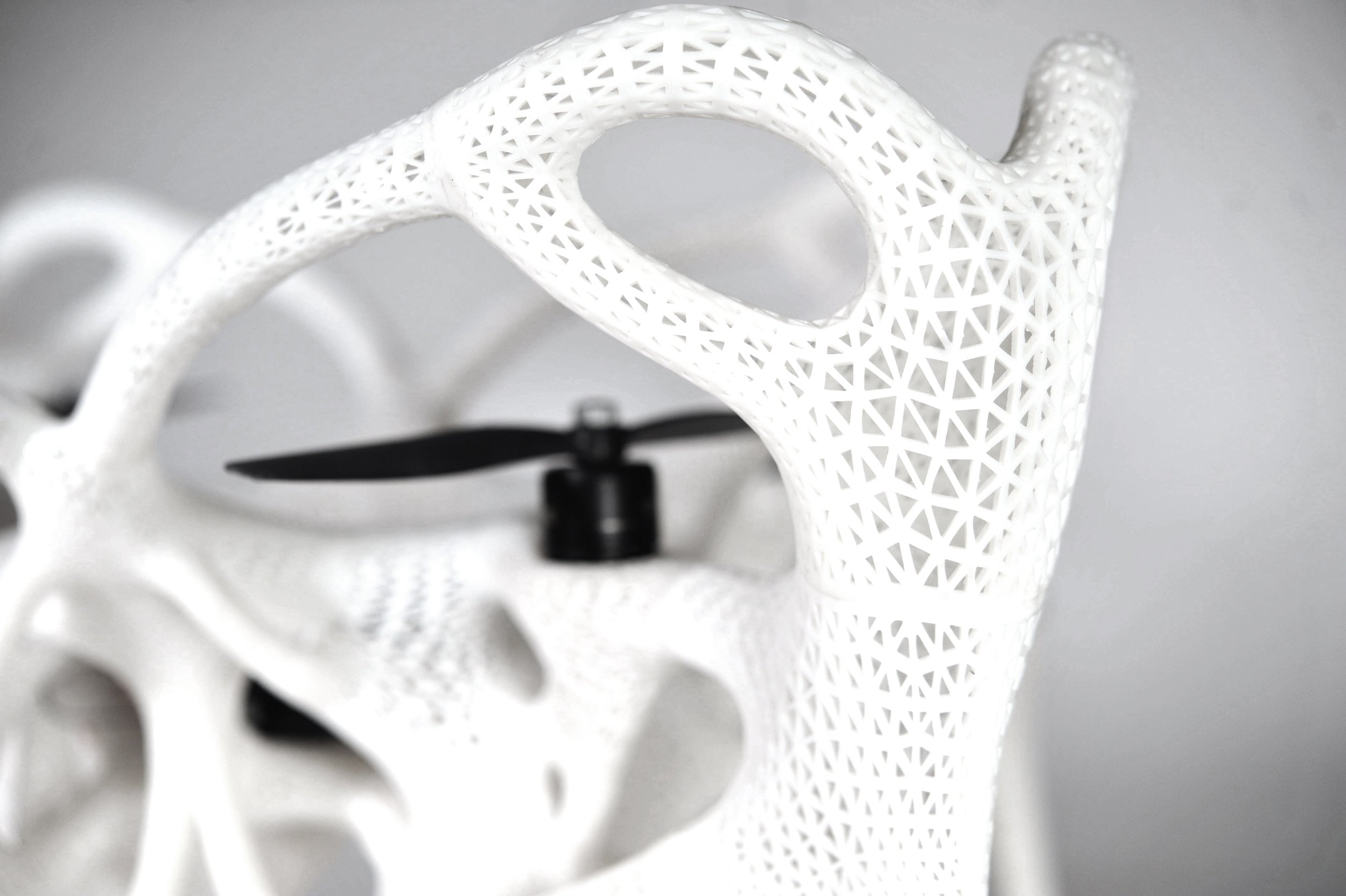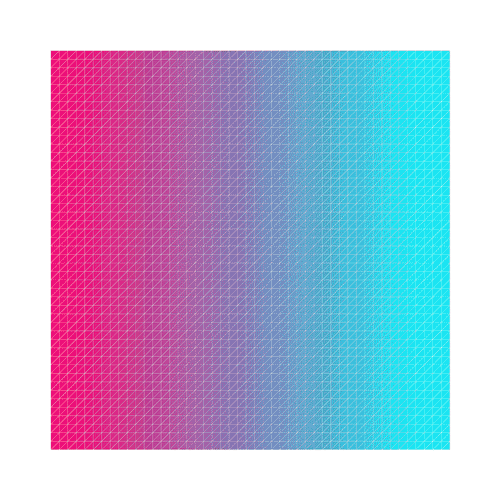
Avia
Avia is a biologically inspired prototype for a quadcopter. Designed for the Harvard GSD course Hybrid Formations: Luftschloss, teams were challenged to construct functional drone prototypes that evoked a sense of architectural space.

Motivation
In the Harvard GSD’s Hybrid Formations class, teams were challenged to design prototype quadcopter drones that evoked a sense of architectural space. Avia is a 3D printed drone that occupies a 2’ x 2’ x 2’ space with an ultra-light lattice chassis. Void space provides room for airflow beneath and around the rotors, while thin members reinforce the structure during takeoff, flight, and landing. The drone’s form was constructed using a multi-step generative system to reduce the structure’s’ weight.
Computational strategies that utilize physics simulation to optimize material layout have been well established as a mathematical process, but the information they provide is often challenging to interpret with traditional fabrication techniques. For architectural forms that exist on the ground, the minimization of material may not be prioritized over other factors such as ease of fabrication. However, the use of topology optimization in order to provide maximum reinforcement for defined load cases has seen use in the fields of aerospace engineering and biomechanics. In these fields, the reduction of material and weight while maintaining integrity under loads is of primary concern. Here we explore the use of a two-fold strategy for the reduction of material for the design of a drone-based architectural hybrid formation. This form comprises a tangible representation of generative-design strategies that significantly reduce weight, potentially allowing architecture to take flight.


Overview
The advancement of fabrication techniques such as 3D printing allows for the production of forms previously deemed impractical or impossible. This allows for the re-interpretation of traditional architectural forms in novel settings that have remained relatively unexplored so far. The goal of designing an architectural form for flight was chosen not only as a setting that would force novel priorities on the design process, but also for the idiomatic interpretation of the “castle in the sky” (i.e. luftschloss) as something that is explicitly unrealistic; a pipe dream. By upending the relative architectural constant of support from the ground, we were able to research the use of material-minimization strategies in a setting where they were of the utmost importance. In this way, the drone as seen as a new medium the represents a more general strategy for material and weight reduction in architecture.
Beginning with a rectangular-prism solution space, the general distribution of material was determined through generative topology-optimization for the load cases experienced during flight and landing. Void spaces were assigned for the purposes of airflow as directed by computational-fluid-dynamics modeling. The corners of the form were fixed to the outer edges of the cubic volume in order to maintain the structure’s identity as an interpretation of a cube. This solution spaced provided a backbone for the generation of multiple iterations of the form, each of which complied with the material allocation strategies output by topology optimization. Material was then further reduced by converting the shell-structure of these forms into a lattice with strut length and with determined by surface curvature. The result of this process was a 37% reduction in weight.
Digital Design
Avia’s design negotiates the challenges of minimizing structure weight, occupying the designated space, providing room for the function of rotors, and accommodating the spatial limitations of the 3D printing system. The general form was created through topology optimization that iteratively subtracted material from areas not required to support the system components during takeoff and landing. Additional spaces were marked out as void to allow for airflow around the rotors and to house electrical components. Next, a variable width lattice pattern was used to further reduce material weight. Lattice struts were thickened in areas of high load and thinned in areas of low load. Additional seams were added to allow for the bonding of structure components. The structure was 3D printed using stereolithography and bonded with additional resin to form a fully sealed chassis with all components embedded within.
Avia // 2017
-
Acknowledgements
Project Team
Nic Lee, Nate Peters, Royce Perez, Max Vanatta
-
Awards and Recognition
Exhibitions
Gund Hall Student Showcase, 2018



